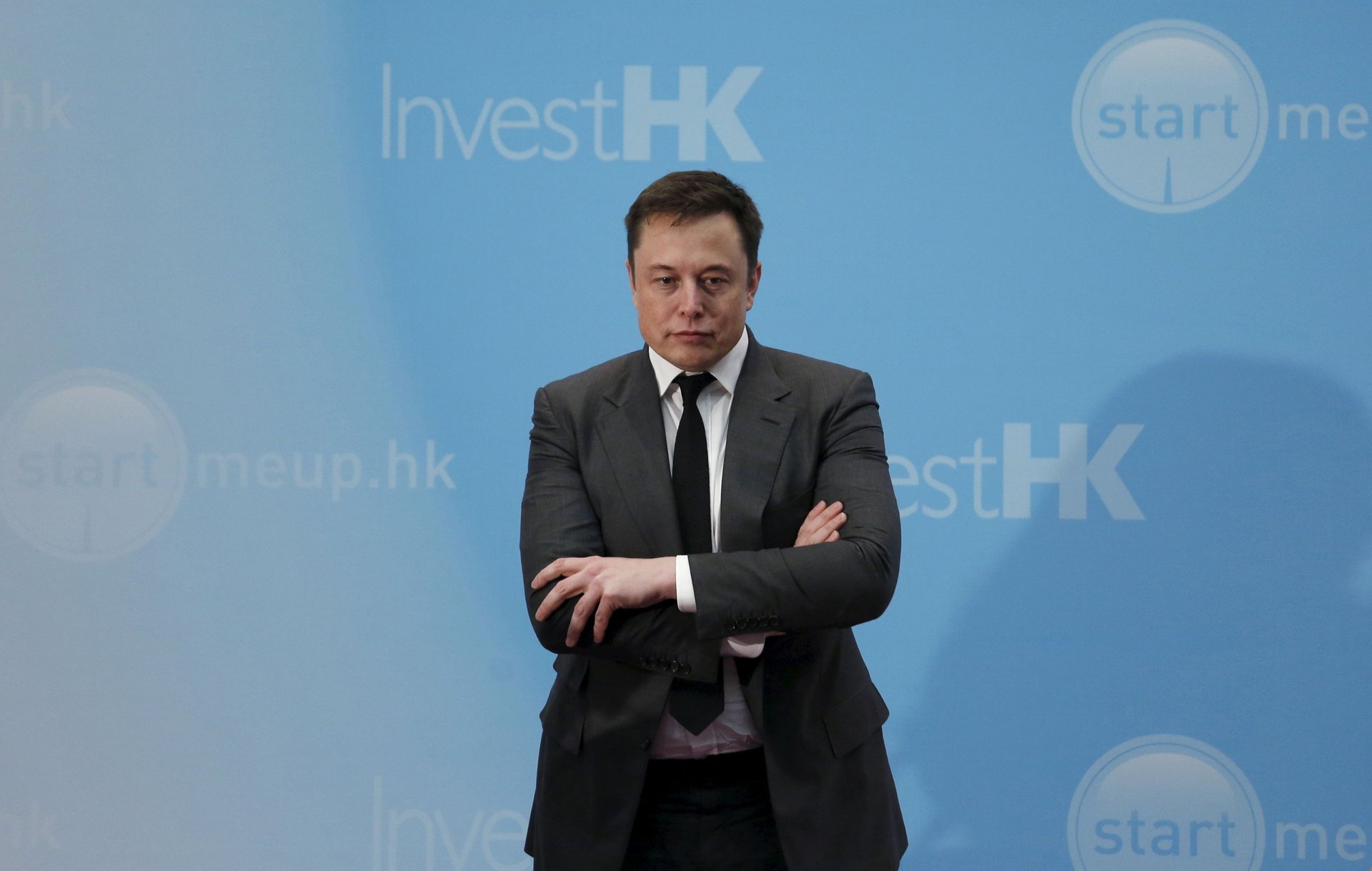Tesla is temporarily stopping Model 3 production again, threatening its financial future
The wheels may be coming off the Tesla Model 3.


The wheels may be coming off the Tesla Model 3.
Production of the Model 3, the most important determinant of the electric carmaker’s financial future, is stopping for the second time since February. In a letter to employees, Tesla CEO Elon Musk announced a four- to five-day pause to “improve automation” on the assembly line, reports BuzzFeed News. Workers will be forced to use vacation days, stay home without pay, or find a limited amount of other paid work at the factory.
The shutdown threatens Musk’s promise to produce 5,000 of the mass-market sedans per week by this summer. In late March, the automaker was building just 2,020 of the Model 3 vehicles, which carry pricetags starting at $35,000 each, per week. That’s well short of the 2,500 per week it promised customers and investors this year, and a fraction of the original goal of 20,000 Model 3s per week by that March timeframe.
But a Tesla spokesperson responded by email that periods of downtime are planned for both Fremont and its Gigafactory 1 in Nevada. “These periods are used to improve automation and systematically address bottlenecks in order to increase production rates,” the spokesperson wrote. “This is not unusual and is in fact common in production ramps like this.”
The latest shutdown comes just weeks after Musk tried to reassure jittery investors on Twitter that “Tesla will be profitable & cash flow+ in Q3 & Q4″ with no need to raise more money in 2018. Moody’s Investors Service downgraded Tesla’s credit rating on March 27, citing the Model 3 shortfall, and the value of Tesla’s securities plunged as bond investors fled. But on April 12, Musk denied predictions it would face a $2.5 billion or greater cash shortfall this year, and the company’s stock rose 3% on the news.
That prediction, like many of Musk’s, is starting to look flimsy. This is the second shutdown of the company’s Model 3 assembly line. The first came in February after Tesla began installing new equipment to address production bottlenecks. The company called the move a common way to upgrade equipment and speed up production. But as targets have slipped further behind, Musk personally took the lead on Model 3 production (paywall) from senior vice president of engineering, Doug Field.
The problems have arisen since Musk’s vision of a highly automated assembly line has crashed into the hard reality of moving from building luxury cars to mass-produced vehicles. The decision to use a complex, automated assembly process for the Model 3 defied the advice of Tesla executives, as well as many auto industry veterans who predicted catastrophe, because robots struggle with the fine adjustments in final assembly and malfunctions can stall the entire line for days or weeks. Musk has learned this lesson the hard way.
Angry shareholders have filed multiple lawsuits against the company. Although such suits are not unusual after stocks run into trouble, the suits against Tesla look more credible as former employees are speaking out against the company. One class action suit filed on Mar. 23 accuses Musk of deceiving investors about Model 3 progress. It alleges suppliers and Tesla executives told the CEO that the Model 3 timeline was “impossible,” and Musk continued to make knowingly deceptive public statements about the original timeline.
Musk is now in a race to produce enough Model 3s to avoid a reckoning with investors no longer willing to believe the CEO’s promises. But Musk has escaped “production hell” before, the term he used to describe the Model 3 ramp up. The disastrous early production of the Model X SUV saddled the company with huge delays and costs. It was, Musk later admitted, an example of “hubris extraordinaire.”
The Model 3 may make the Model X misfortune looks like modest mistakes. Musk has bet the company on the Model 3. If the latest shutdown is lengthy and doesn’t succeed at speeding up the Model 3 assembly line, then Musk’s April 1 joke on Twitter about bankruptcy may turn out to be prophetic.
This story was updated with a quote from a Tesla spokesperson.